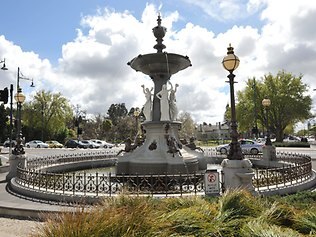Victoria's TAFEs slide $100m
VICTORIA'S TAFEs went backwards by almost $100m last year, notwithstanding claims they're in "good financial shape".
VICTORIA'S struggling TAFEs lost almost $100 million of financial breathing space last year, with the combined surplus of the 14 standalone TAFEs halving to $98m.
Higher Education and Skills Minister Peter Hall said the state’s TAFEs were in “good financial shape” and had adapted well to Victoria’s move to an open market for government training funding.
He said the institutes’ annual reports, which were tabled in parliament yesterday, showed they had posted “robust financial results” with a combined funded surplus of $98m.
But this is only half of the $192m surplus recorded in 2010. Just three of the 14 TAFEs ended up in better financial shape last year, after 11 suffered net operating losses averaging $6m each.
While much of the shortfall in the combined surplus was due to declining government capital grants, which fell by almost $70m, the 14 TAFEs also lost more than $40m from their operations.
University of Melbourne tertiary education exert Leesa Wheelahan said the government was guilding the lily and trying to justify an “extraordinary increase in funding towards private providers”.
“[It] is trying to soften us all up for more cuts in vocational education and training funding overall, which will hurt TAFE most of all as well as drive down [income for] the reputable private providers,” Dr Wheelahan said.
“If this being in good shape, I’d hate to see what being in bad shape is.”
The state budget is due to be handed down on May 1, with the government flagging new measures to reinforce quality in government-funded training. Sources also predict funding cuts and moves to rein in growth by imposing new restrictions on the providers eligible to receive government training funds.
Victorian training enrolments have soared 44 per cent in the three years since the previous Labor government started opening government training funds to private competition. But the growth has been monopolised by private colleges where enrolments have more than quadrupled since 2008, rocketing 112 per cent last year alone.
TAFEs’ market share has shrunk from 66 to 48 per cent, after slow enrolment growth in 2009 and 2010 disappeared completely last year. Institutes were unable to fill the gap with fee-for-service activities, which declined 4 per cent last year.
The best performing institutes, according to the annual reports, were eastern Melbourne-based Box Hill and Geelong-based Gordon. Box Hill recorded a net operating gain of almost $16m despite a relatively small increase in capital funding, while The Gordon’s net result improved by $7m even though its capital funding had fallen by over $6m.
Enrolments at both institutes increased by well over 20 per cent last year, even though there was no growth across TAFEs as a whole, suggesting the two have found ways to prosper in the open training market. Government operating contributions to Box Hill increased 10 per cent or $6.5m last year, while at The Gordon they rose a whopping 48 per cent or $26m.
Mr Hall said international student fees paid to TAFEs had also risen $7m or 6 per cent – a remarkable result in a state where overall vocational training enrolments declined 19 per cent last year.
But small and regional TAFEs have struggled, with Bendigo TAFE and Shepparton-based GOTAFE both recording comprehensive losses of over $2.5m. Mildura-based Sunraysia TAFE and Melbourne hospitality training specialist William Angliss Institute had comprehensive losses approaching $1.5m. Wodonga TAFE and Bairnsdale-based Advance TAFE both saw their government operating contributions decline.
The government recently advanced funds to Bendigo to help it through financial difficulties. Bendigo has flagged a restructure after “struggling with the contestable environment”, and Mr Hall said the state Education Department was working with a second institute “to address the financial problems they are facing”.
The Victorian TAFE Association said TAFEs needed their surpluses to cover obligations to staff, such as long service leave liabilities, and commitments to contribute to building projects.
“It’s not like that money can be taken away,” said executive director David Williams.




